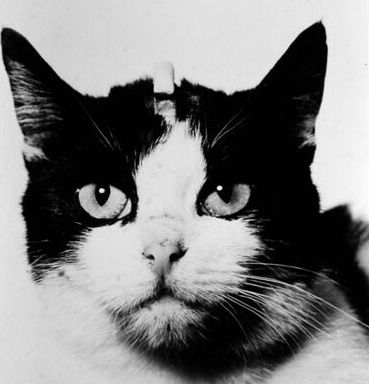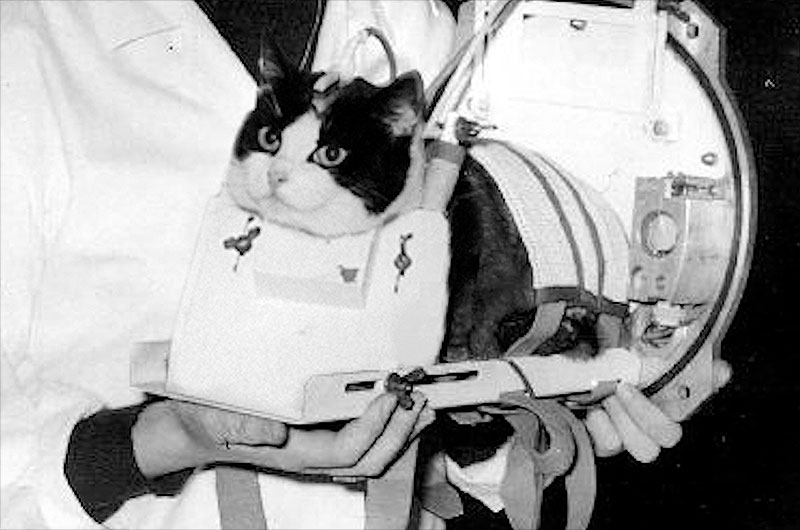You’ve heard of Laika, the first Dog in space, but did you know that a Cat was once sent to space?
Meet Felicette, the first feline to go to space.

MEET FELICETTE
Felicette was the (un)lucky Cat whom French scientists chose to go to space, out of 14 trained Cats. She was launched on Oct. 18, 1963. You’d think she’d live a relatively peaceful life after her flight, but alas, her life was cut short two months later so that scientists could study her brain.
This begs the question, where do we draw the line?

ANIMAL ETHICS AND SPECIESISM
I sought answers from Shiela R. Castillo, a futurist and animal rights activist to get a better understanding on animal ethics.
Shiela’s definition of animal ethics is simple. It is about how we see animals and how we relate to them. “[Animal ethics] is how we treat them. The ethical treatment of animals is an expression of our understanding of their moral standing. “
Basically, animal ethics is recognizing that an animal’s life matters as much as a human being’s does.
On the other hand, speciesism is the assumption that human beings are superior over other species. Speciesism rationalizes animal exploitation.

ANIMALS IN SPACE
Scientists from the National Aeronautics and Space Administration (NASA) have been bringing animals to space as early as the 1940s, according to a write-up on their website on the brief history of animals in space.
The first known animal was a Rhesus Monkey, who was launched into space on Jun. 11, 1948 in New Mexico. Almost a year later, in 1949, a different Monkey was launched, but the poor creature did not survive.
During the 1950s, the Soviet Union also began testing. On Nov. 3, 1957, they launched Laika, the first Dog to orbit the Earth. Unfortunately, she died a few hours after her flight.
LAIKA’S DEATH
In a report by BBC News in 2002, it was revealed that Laika died of overheating and stress a few hours after she was launched in 1957.
Despite that, this propelled more experiments on different kinds of animals, ranging from Mice to Cats. During that period, only one Cat was brought to space, and that was Felicette.

ALL IN THE NAME OF SCIENCE
For Shiela, Felicette’s story is a story of speciesism, where the more docile a creature is, the more exploitable they are. “Speciesism is devoid of empathy,” said Shiela.
In the eyes of French scientists, her docility was what turned her into a prime candidate for space flight, out of 14 Cats who were trained for that moment.
This was the case not only in scientific research but also in everyday life. Chickens, Cows, and Pigs are domesticated to become food sources for the population. Surprisingly, the lack of empathy toward animals is prevalent.
For Felicette to be purposely killed and to have her brain studied by scientists is to not view her as a being with thoughts and emotions. Shiela believes that Felicette should’ve been left to retire instead.

WHERE DOES THE LINE END?
The question that should be asked is, “Where should the line even begin?” Science does not take into account the animal’s sentience; thus, any test made with animals is considered immoral.
Animals, just like human beings, value survival the most. They just want to live in this world peacefully and not necessarily with any fanfare. But because animals don’t have the ability to speak like us, there’s a tendency for humans to take advantage of them for the advancement of science.
Shiela said that in the US alone, 100 million animals are killed for chemical, drug, food, and cosmetics testing, as well as medical and biology training. A hundred million who just wanted to be left alone, lost.
This is what animal ethics is about: for people to listen harder when animals communicate — because they do, even if they don’t speak our language. Shiela said it best, “The ethical treatment of animals is an expression of our understanding of their moral standing.”
FELICETTE’S ENDING
I asked Shiela on what should’ve happened to Felicette after her flight, and she responded that she should’ve been retired. “It is simply an admission that it already happened but they shouldn’t have exploited her more.”
Shiela added that Felicette’s death was unfair, because she was an object of study. That was the only purpose she served in the scientists’ eyes. It was as if it wasn’t enough that she had electrodes implanted in her brain, just so scientists could get data from her; they had to kill her and look inside her brain too.
Felicette was simply seen as an object to be studied by scientists, instead of as an individual who simply wanted to live.
In an alternate universe where humans thought better of their fellow creatures, Felicette would have been left alone.

ANIMAL TESTING ALTERNATIVES
Some animal testing alternatives Shiela suggested include cell culture, in-vitro technology, and cutting edge computer modelling.
While these technologies are used, they are not yet mainstream. The problem is that there are scientists in the community who refuse to acknowledge animals’ sentience. Humanity has a long way to go before animal testing could be completely eradicated.






